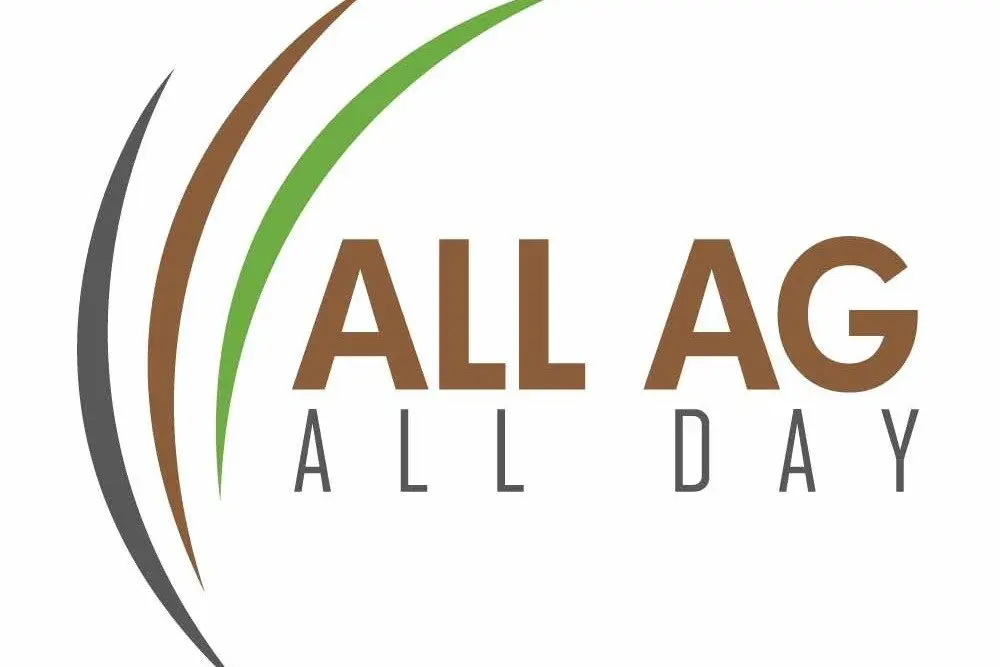
All Ag, All Day is the nation's only full-time farm radio station with studios in Floydada and Nashville, TN (www.AllAgNews.com)
USDA Forecasts Strong Rise In 2025 Farm Profits
WASHINGTON, DC – The U.S. Department of Agriculture projects net farm income at $179.8 billion for 2025, a 40.7 percent increase from 2024. Adjusted for inflation, that’s a 37.2 percent gain—well above the 20-year average. Net cash farm income, which better reflects day-to-day operations, is forecast to climb 28.5 percent to $180.7 billion.
Farm businesses are expected to average $127,000 in net cash income this year, up 12 percent from 2024. Eight of nine USDA farm resource regions are projected to see gains, led by the Mississippi Portal, though the Heartland region could see declines. Animal agriculture is forecast to be stronger, while crop income shows mixed results.
On the balance sheet, farm equity is forecast to grow from nearly $171 billion to $3.83 trillion, while debt is projected to rise $28.3 billion to $591.8 billion. Debt-to-asset ratios are expected to hold steady at 13.4 percent. Median household income for farm families is forecast at $109,515, supported mainly by off-farm earnings.
Farm-Level Takeaway: The USDA’s outlook indicates improving profitability and financial stability in 2025, although crop producers may experience more uneven results than livestock operations.
**********
Allendale Survey Projects Strong Corn, Soybean Yields
McHENRY, IL – Allendale, Inc. released results from its 36th annual Nationwide Producer Yield Survey, projecting a U.S. corn crop of 16.63 billion bushels and a soybean crop of 4.268 billion bushels. Conducted from August 18 to 29, the survey collected producer-calculated yields in 25 states, with coverage representing 87 percent of corn and 84 percent of soybean production.
Allendale Chief Strategist Rich Nelson noted the survey pegged corn yields at 187.52 bushels per acre and soybeans at 53.28 bushels per acre. Smaller producing states were modeled using the USDA’s August 12 estimates, while harvested acreage was also based on USDA figures.
The firm emphasized that the estimates reflect direct input from farmers, with surveys conducted by Allendale brokers, its website, and social media platforms. These numbers, if realized, suggest a robust U.S. harvest heading into the fall, though market focus will remain on the weather’s impacts and the USDA’s upcoming supply-demand reports.
Farm-Level Takeaway: If yields approach these projections, farmers may face pressure on crop prices this fall. Strong harvest volumes reinforce the importance of managing storage, marketing plans, and input costs.
**********
Farm Debt Concerns Rise As Non-Real Estate Loans Worsen
NASHVILLE, TN – Non-real estate farm debt showed signs of stress in the first quarter of 2025, according to commercial bank call reports compiled by the Federal Financial Institutions Examination Council. The data reveal a sharp rise in troubled loans, explains Charley Martinez with the University of Tennessee Institute of Agriculture.
Non-accrual loans jumped 80% from the previous quarter, reaching their highest level since late 2021. Loans that were 30–89 days late climbed to $108.9 million, a 196% increase from the fourth quarter of 2024 and 146% higher than a year ago. While these short-term late loans often rise seasonally in the first quarter, the surge was much greater than usual. Alabama and Arkansas experienced the most pronounced issues, with 3.1% and 1.4% of their loan volume, respectively, falling into the 30–89 days late category. By comparison, both states were near 0.3% or lower a year earlier.
Despite the rise in delinquent debt, total loan volume was up 4% compared to the first quarter of 2024, though slightly lower than the previous quarter due to seasonal borrowing patterns. Analysts note that row crop producers appear to be under greater pressure than livestock operations, which benefited from strong prices. Looking ahead, government support programs such as ARC and PLC could help offset losses, but payments are delayed until October 2026, forcing many producers to work closely with lenders sooner than usual to maintain credit access.
Farm-level takeaway: Row crop producers face growing financial strain, with rising delinquent loan levels signaling tighter credit conditions. Livestock operations remain stronger, but lenders may increase scrutiny heading into 2026.
**********
Housing Glut Pressures Lumber Market And Tariff Outlook
NASHVILLE, TN – According to the U.S. Census Bureau and the Department of Housing and Urban Development, the number of unsold newly constructed homes reached 121,000 in July, the highest level since July 2009. Weak housing demand has coincided with slower new home sales, which fell to 652,000 units, a 8.2 percent decline from the previous year, with median home prices slipping nearly 6 percent to $403,800.
The softer housing market is already rippling into the lumber sector. Lumber futures have dropped from an early August high near $695 per thousand board feet to about $595, a 14 percent decline. Oversupply, partly from stockpiling ahead of tariff increases, is weighing heavily on prices despite elevated duties. U.S. tariffs on Canadian softwood lumber, now averaging 35%, remain a significant factor shaping North American trade. Canadian producers, who face company-specific duty rates ranging from 24 to more than 40 percent, are pivoting toward alternative export markets.
For U.S. forestry and milling, the combination of high tariffs, weaker housing demand, and volatile lumber prices poses mixed outcomes. While stumpage values may benefit from tariff protection, sawmills and rural economies tied to home construction are strained by shrinking demand and unpredictable pricing.
Farm-Level Takeaway: Forestry producers and rural mills may face near-term uncertainty as housing weakness and lumber oversupply clash with tariff policies. Long-term stability hinges on whether housing demand can rebound enough to support both timber prices and milling jobs.
**********
July Corn Crush Shows Mixed Year-Over-Year Trends
NASHVILLE, TN – U.S. corn use for alcohol and other purposes reached 506 million bushels in July 2025, up 2 percent from June but 6 percent lower than July 2024, according to the USDA’s Grain Crushings and Co-Products Production report. Of the total, 92.2 percent went to alcohol use and 7.8 percent to other purposes.
Corn used for fuel alcohol totaled 456 million bushels, 2 percent higher than the previous month but 6 percent below last year. Beverage alcohol demand, at 2.78 million bushels, declined 9 percent from June and was down 40 percent year over year.
On the co-products side, distillers dried grains with solubles (DDGS) output reached 1.86 million tons, slightly lower than June and 7 percent below 2024. Distillers’ wet grains totaled 1.19 million tons, down 2 percent from June and 3 percent below last year. Wet mill corn gluten feed production improved 2 percent month over month but still trailed 2024 levels by double digits.
Farm-Level Takeaway: Corn demand for fuel alcohol remains steady compared with June, but the year-over-year decline highlights slower ethanol demand compared with 2024. Co-product production, including DDGS, is also trending lower, suggesting potential impacts for livestock feeders who rely on these supplies.



